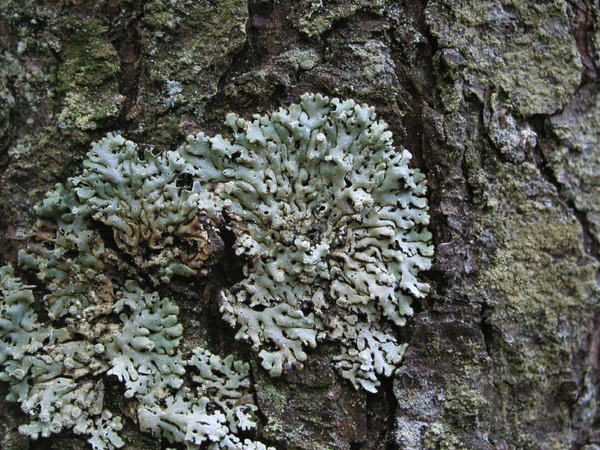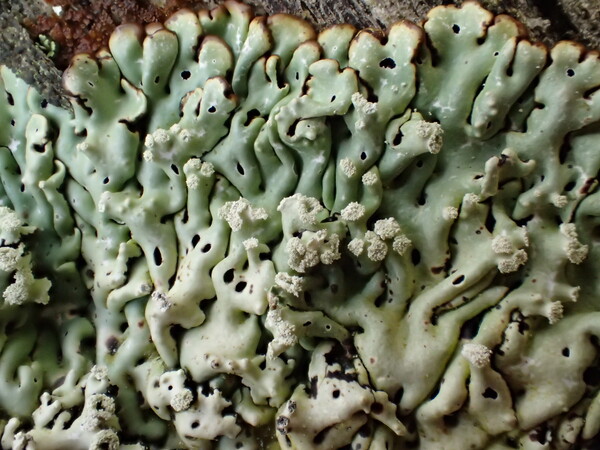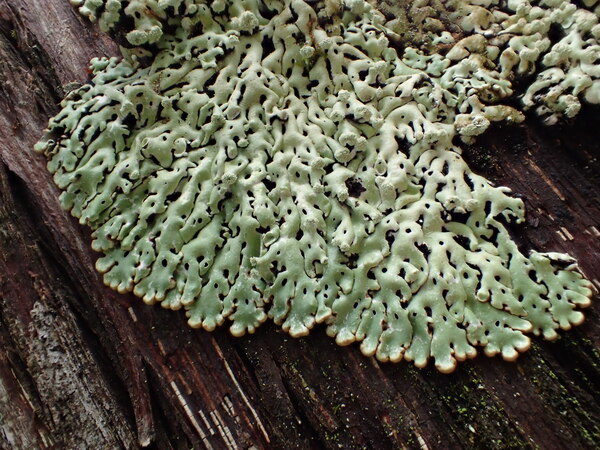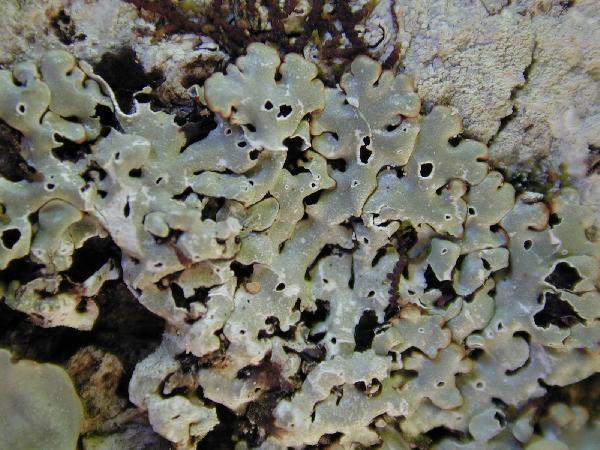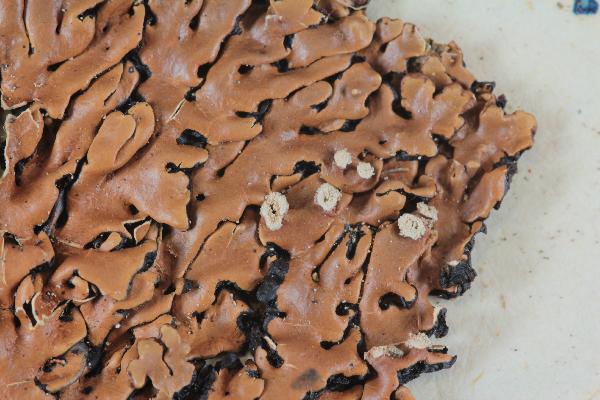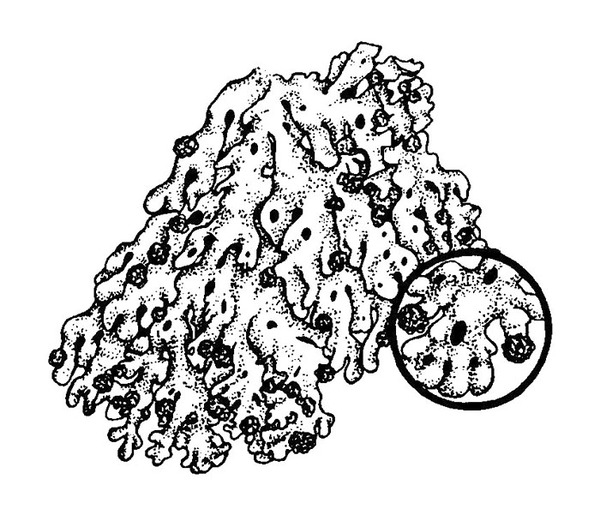Menegazzia terebrata (Hoffm.) A. Massal.
Neagenea Lichenum: 1, 1854. Basionym: Lobaria terebrata Hoffm. - Deutschl. Fl.: 151, 1796.
Synonyms: Imbricaria terebrata (Hoffm.) Körb.; Menegazzia pertusa (Schaer.) J. Steiner; Parmelia pertusa Schaer.; Parmelia terebrata (Hoffm.) Mart.
Distribution: N - VG, Frl (Tretiach 1993, 1996, Modenesi & al. 1997, Nascimbene & al. 1998, Tretiach & Molaro 2007), Ven (Lazzarin 1997, Nascimbene & al. 2005b, 2006c, 2007, 2009c, 2010b, 2013b, Thor & Nascimbene 2007, Nascimbene 2011, Brackel 2013), TAA (Nascimbene & Caniglia 2000b, Nascimbene 2005b, 2008b, Nascimbene & al. 2007b, 2022, Nimis & al. 2015), Lomb (Gheza 2019), Piem (Isocrono & al. 2004). C - Tosc (Loppi & al. 1994, Loppi & Putortì 2001).
Description: Thallus foliose, heteromerous, dorsiventral, forming up to 10 cm wide, regular rosettes, but often dying in central parts, the lobes closely adnate, up to 2(-2.5) mm wide, rounded at apices, contiguous for much of their length, swollen and hollow inside, grey to greenish grey, often brownish at the ends and along margins, smooth and glossy, with round to oval, mostly <1 mm wide, dark perforations, and whitish, rounded, more or less stalked, capitate, to 1.5 mm wide, not marginally proliferating soralia which later often become ring-shaped (maniciform) with a central opening to the medulla, but never lacerate. Lower surface black, wrinkled, erhizinate. Upper cortex paraplectenchymatous, the cell walls with isolichenan; medulla soon becoming hollow, lining the cavity inside the lobes; lower cortex dark, paraplectenchymatous. Apothecia extremely rare, lecanorine, with a brown disc and a persistent thalline margin. Epithecium brown, non-granular; hymenium colourless, I+ blue; paraphyses richly branched and anastomosing; hypothecium colourless, of thick-walled, conglutinated hyphae. Asci 2-spored, Lecanora-type. Ascospores 1-celled,hyaline, ellipsoid, 50-70 x 30-36 µm, thick-walled. Pycnidia very rare, black, immersed. Conidia c. 5 x 1 µm. Photobiont chlorococcoid. Spot tests: upper cortex K+ yellow, C-, KC-, P-; medulla K+ yellow, C-, KC-, P+ yellow-orange, UV-. Chemistry: upper cortex with atranorin, medulla with stictic, constictic, menegazziaic acids, with or without low amounts of norstictic acid. Note: on bark in humid beech-fir forests, exceptionally reaching the submediterranean belt. It is included in the Italian red list of epiphytic lichens as “Vulnerable” (Nascimbene & al. 2013c). See also note on M. subsimilis.
Growth form: Foliose, broad lobed
Substrata: bark
Photobiont: green algae other than Trentepohlia
Reproductive strategy: mainly asexual, by soredia, or soredia-like structures (e.g. blastidia)
Most common in areas with a humid-warm climate (e.g. most of Tyrrenian Italy)
Commonnes-rarity: (info)
Alpine belt: absent
Subalpine belt: absent
Oromediterranean belt: absent
Montane belt: very rare
Submediterranean belt: extremely rare
Padanian area: absent
Humid submediterranean belt: absent
Humid mediterranean belt: absent
Dry mediterranean belt: absent
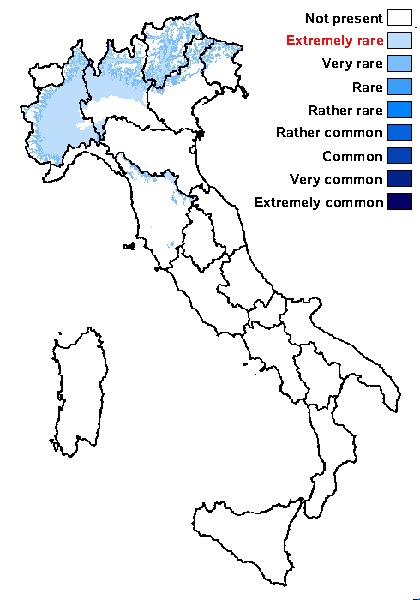
Predictive model
Herbarium samples
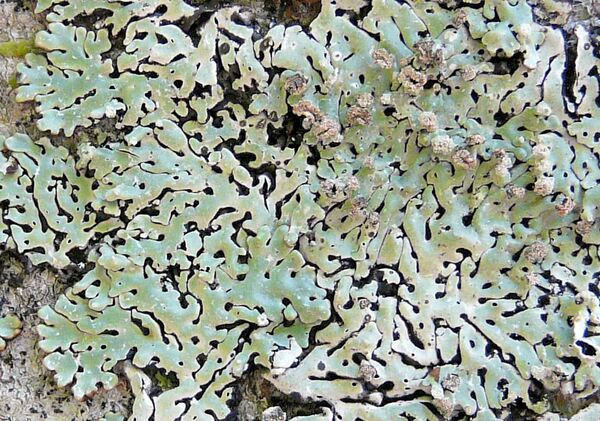

Pier Luigi Nimis - CC BY-SA 4.0; Owner: Department of Life Sciences, University of Trieste
Italy, Friuli Venezia Giulia, Udine, Carnic Alps, Bosco della Stua, Ampezzo Carnico UD
08.2018
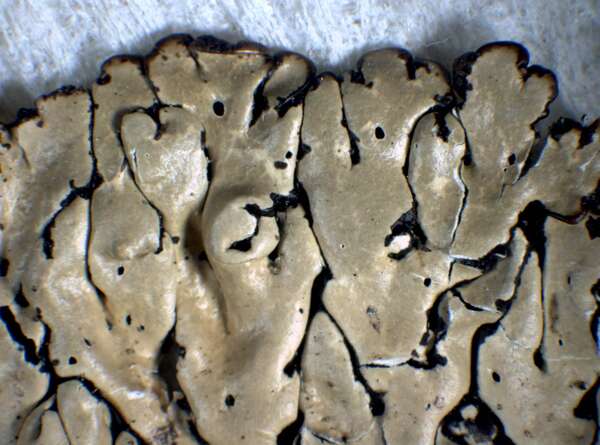

P.L. Nimis; Owner: Department of Life Sciences, University of Trieste
Herbarium: TSB (5136)
2001/11/27
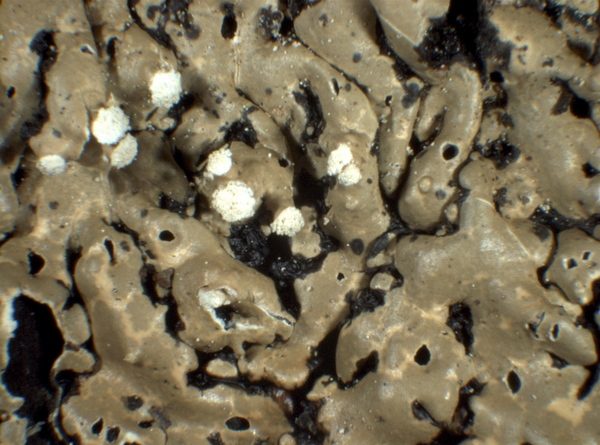

P.L.Nimis; Owner: Department of Life Sciences, University of Trieste
Herbarium: TSB (29259)
2008.03.06
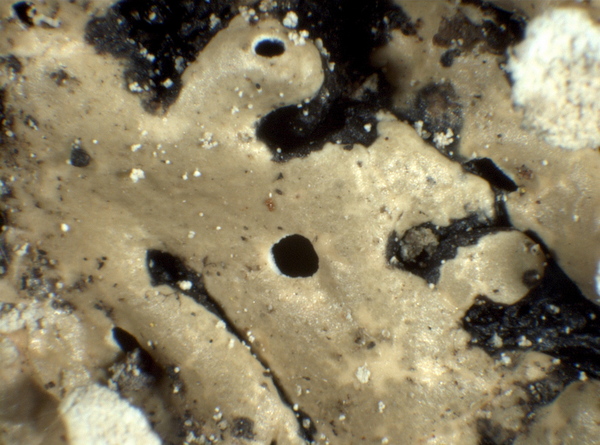

P.L.Nimis; Owner: Department of Life Sciences, University of Trieste
Herbarium: TSB (29259)
2008.03.06
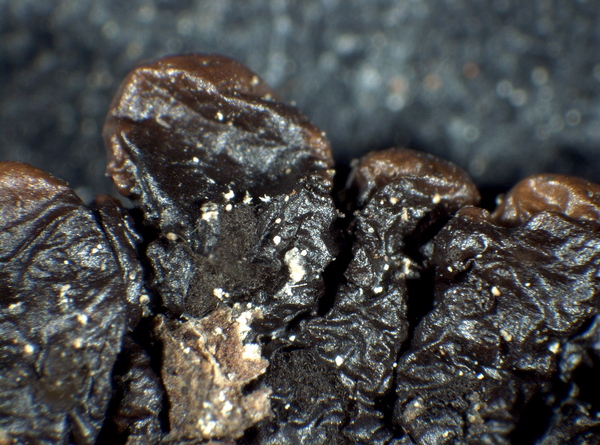

P.L.Nimis; Owner: Department of Life Sciences, University of Trieste
Herbarium: TSB (29259)
2008.03.06
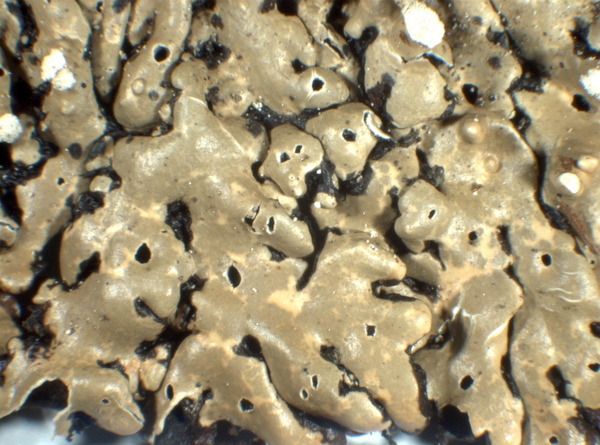

P.L.Nimis; Owner: Department of Life Sciences, University of Trieste
Herbarium: TSB (29259)
2008.03.06
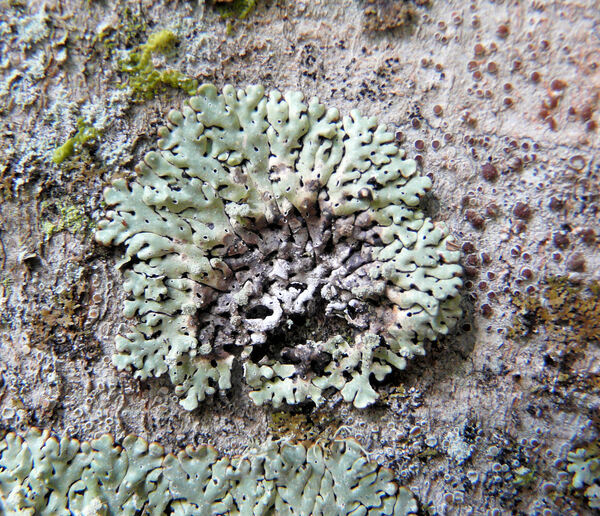

Andrea Moro; Owner: Department of Life Sciences, University of Trieste
Italia, Veneto, BL, Comune di Sappada, pendici boscose del Monte Peralba.
2008.27.08


Andrea Moro; Owner: Department of Life Sciences, University of Trieste
Italia, Veneto, BL, Comune di Sappada, pendici boscose del Monte Peralba.
2008.27.08
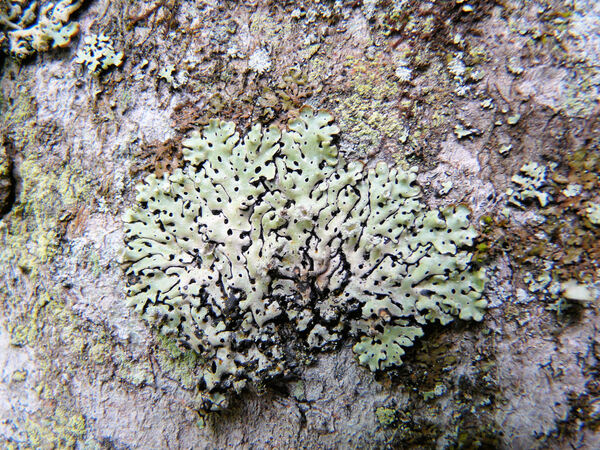

Andrea Moro; Owner: Department of Life Sciences, University of Trieste
Italia, Veneto, BL, Comune di Sappada, pendici boscose del Monte Peralba.
2008.27.08
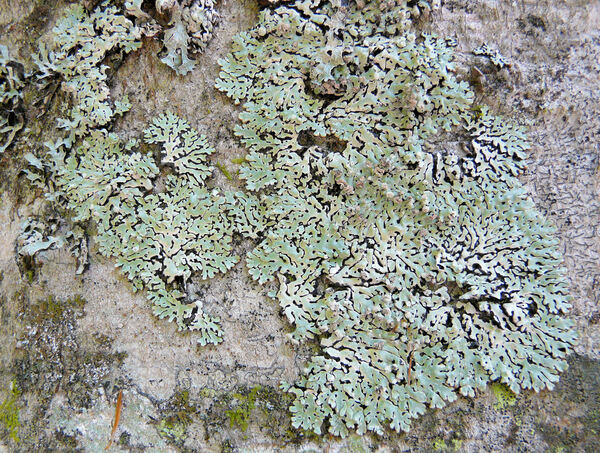

Andrea Moro; Owner: Department of Life Sciences, University of Trieste
Italia, Friuli-Venezia Giulia, UD, Comune di Sauris, Bosco della Stua presso il Lago
2008.26.08
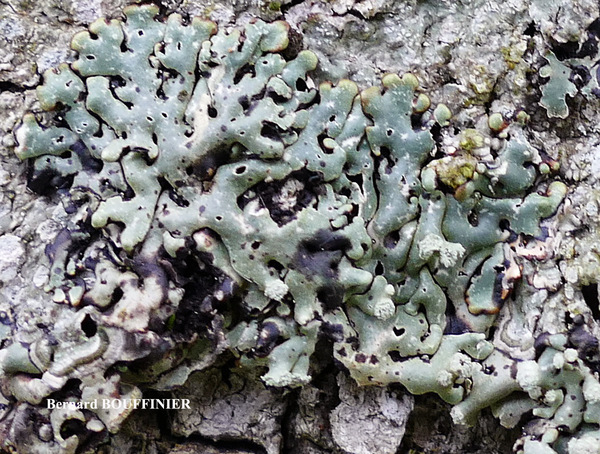
Bernard Bouffinier - Source: http://www.lichensmaritimes.org/index.php?task=fiche&lichen=295&lang=en
France, Pyrénées-Atlantiques Larrau
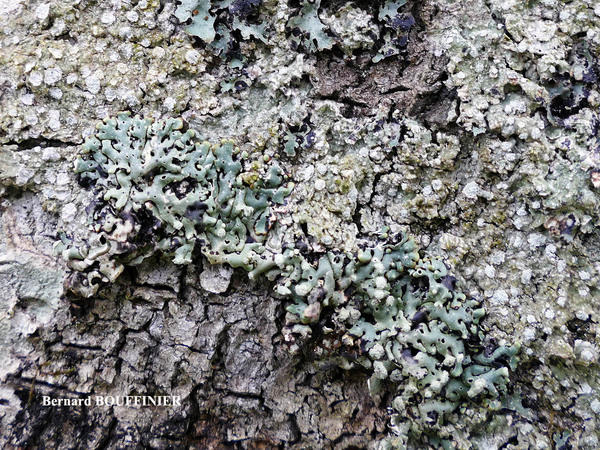
Bernard Bouffinier - Source: http://www.lichensmaritimes.org/index.php?task=fiche&lichen=295&lang=en
France, Pyrénées-Atlantiques Larrau
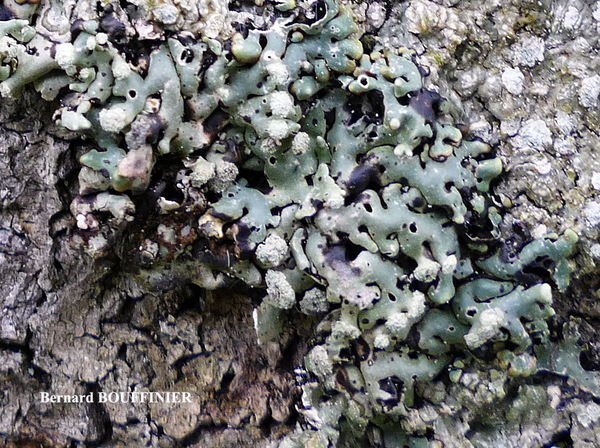
Bernard Bouffinier - Source: http://www.lichensmaritimes.org/index.php?task=fiche&lichen=295&lang=en
France, Pyrénées-Atlantiques Larrau
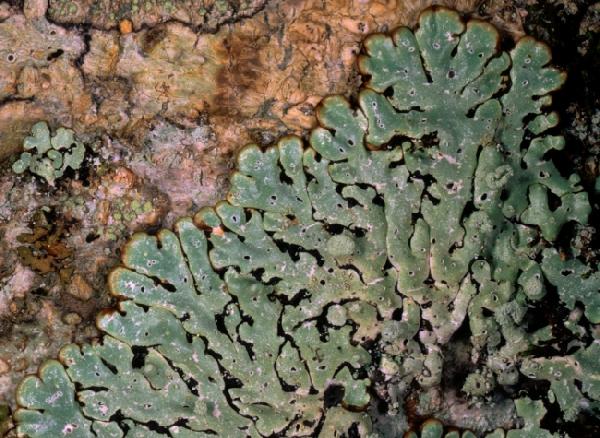
Ulrich Kirschbaum CC BY-SA 4.0 - Source: https://www.thm.de/lse/ulrich-kirschbaum/flechtenbilder
Austria: Alps.
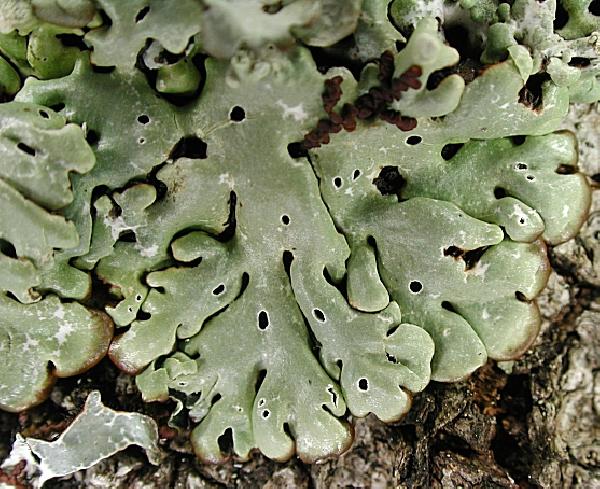
Ulrich Kirschbaum CC BY-SA 4.0 - Source: https://www.thm.de/lse/ulrich-kirschbaum/flechtenbilder
Austria: Alps.
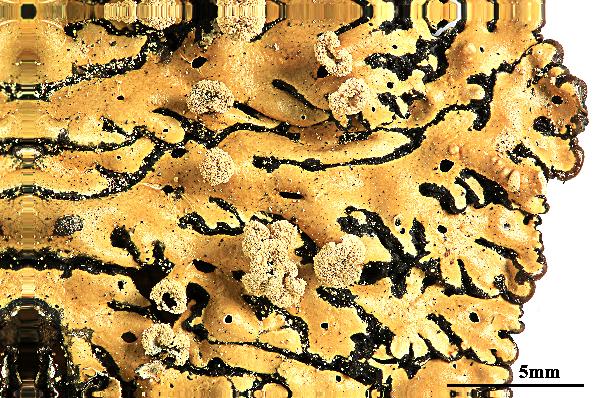

Felix Schumm - CC BY 4.0
[1046]. Österreich, Land Salzburg, Steir. Salzkammergut, Mitterndorf
bei der Sonnenalm, an Laubbaum in Richtung Kampl. Leg. F. Schumm,
31.12.1968, det. F. Schumm, 1968. Chemistry p138/2: atranorin, stictic
acid (major), menegazzaic acid (major), connorstictic acid (minor),
constictic acid (major), norstictic acid (trace).
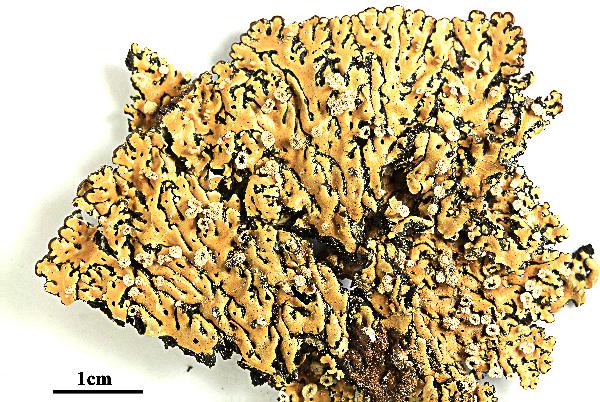

Felix Schumm - CC BY 4.0
[1046]. Österreich, Land Salzburg, Steir. Salzkammergut, Mitterndorf
bei der Sonnenalm, an Laubbaum in Richtung Kampl. Leg. F. Schumm,
31.12.1968, det. F. Schumm, 1968. Chemistry p138/2: atranorin, stictic
acid (major), menegazzaic acid (major), connorstictic acid (minor),
constictic acid (major), norstictic acid (trace).
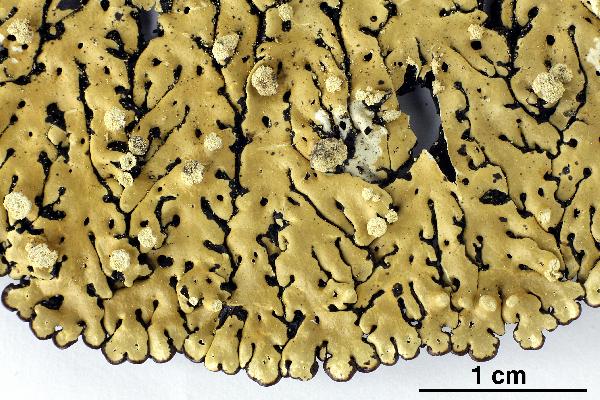

Felix Schumm - CC BY 4.0
[81052], Österreich, Land Salzburg, Steir. Salzkammergut, Mitterndorf
bei der Sonnenalm . Leg. F. Schumm, 06.1967, det.
F. Schumm, 1967, conf. Dr. Alwin Schade.
Growth form: Foliose, broad lobed
Substrata: bark
Photobiont: green algae other than Trentepohlia
Reproductive strategy: mainly asexual, by soredia, or soredia-like structures (e.g. blastidia)
Most common in areas with a humid-warm climate (e.g. most of Tyrrenian Italy)
Commonnes-rarity: (info)
Alpine belt: absent
Subalpine belt: absent
Oromediterranean belt: absent
Montane belt: very rare
Submediterranean belt: extremely rare
Padanian area: absent
Humid submediterranean belt: absent
Humid mediterranean belt: absent
Dry mediterranean belt: absent

Predictive model
| Herbarium samples |


Pier Luigi Nimis - CC BY-SA 4.0; Owner: Department of Life Sciences, University of Trieste
Italy, Friuli Venezia Giulia, Udine, Carnic Alps, Bosco della Stua, Ampezzo Carnico UD
08.2018


P.L. Nimis; Owner: Department of Life Sciences, University of Trieste
Herbarium: TSB (5136)
2001/11/27


P.L.Nimis; Owner: Department of Life Sciences, University of Trieste
Herbarium: TSB (29259)
2008.03.06


P.L.Nimis; Owner: Department of Life Sciences, University of Trieste
Herbarium: TSB (29259)
2008.03.06


P.L.Nimis; Owner: Department of Life Sciences, University of Trieste
Herbarium: TSB (29259)
2008.03.06


P.L.Nimis; Owner: Department of Life Sciences, University of Trieste
Herbarium: TSB (29259)
2008.03.06


Andrea Moro; Owner: Department of Life Sciences, University of Trieste
Italia, Veneto, BL, Comune di Sappada, pendici boscose del Monte Peralba.
2008.27.08


Andrea Moro; Owner: Department of Life Sciences, University of Trieste
Italia, Veneto, BL, Comune di Sappada, pendici boscose del Monte Peralba.
2008.27.08


Andrea Moro; Owner: Department of Life Sciences, University of Trieste
Italia, Veneto, BL, Comune di Sappada, pendici boscose del Monte Peralba.
2008.27.08


Andrea Moro; Owner: Department of Life Sciences, University of Trieste
Italia, Friuli-Venezia Giulia, UD, Comune di Sauris, Bosco della Stua presso il Lago
2008.26.08

Bernard Bouffinier - Source: http://www.lichensmaritimes.org/index.php?task=fiche&lichen=295&lang=en
France, Pyrénées-Atlantiques Larrau

Bernard Bouffinier - Source: http://www.lichensmaritimes.org/index.php?task=fiche&lichen=295&lang=en
France, Pyrénées-Atlantiques Larrau

Bernard Bouffinier - Source: http://www.lichensmaritimes.org/index.php?task=fiche&lichen=295&lang=en
France, Pyrénées-Atlantiques Larrau

Ulrich Kirschbaum CC BY-SA 4.0 - Source: https://www.thm.de/lse/ulrich-kirschbaum/flechtenbilder
Austria: Alps.

Ulrich Kirschbaum CC BY-SA 4.0 - Source: https://www.thm.de/lse/ulrich-kirschbaum/flechtenbilder
Austria: Alps.


Felix Schumm - CC BY 4.0
[1046]. Österreich, Land Salzburg, Steir. Salzkammergut, Mitterndorf bei der Sonnenalm, an Laubbaum in Richtung Kampl. Leg. F. Schumm, 31.12.1968, det. F. Schumm, 1968. Chemistry p138/2: atranorin, stictic acid (major), menegazzaic acid (major), connorstictic acid (minor), constictic acid (major), norstictic acid (trace).


Felix Schumm - CC BY 4.0
[1046]. Österreich, Land Salzburg, Steir. Salzkammergut, Mitterndorf bei der Sonnenalm, an Laubbaum in Richtung Kampl. Leg. F. Schumm, 31.12.1968, det. F. Schumm, 1968. Chemistry p138/2: atranorin, stictic acid (major), menegazzaic acid (major), connorstictic acid (minor), constictic acid (major), norstictic acid (trace).


 INDEX FUNGORUM
INDEX FUNGORUM
 GBIF
GBIF
 DOLICHENS
DOLICHENS
